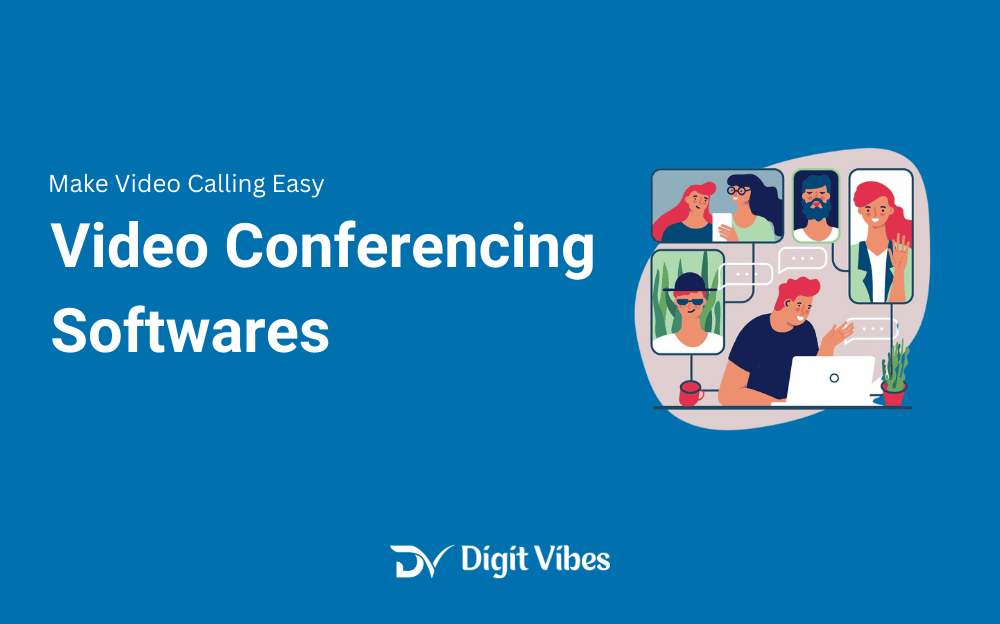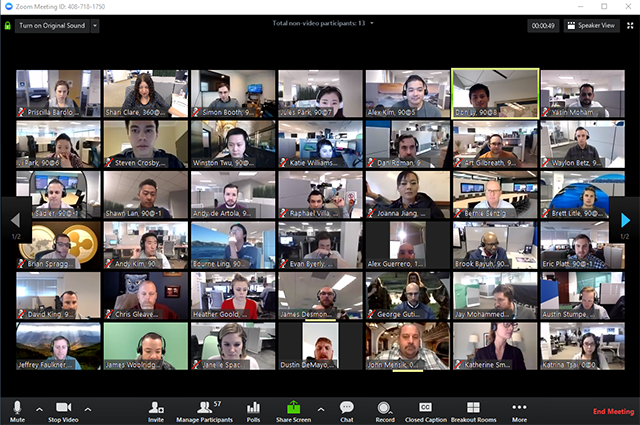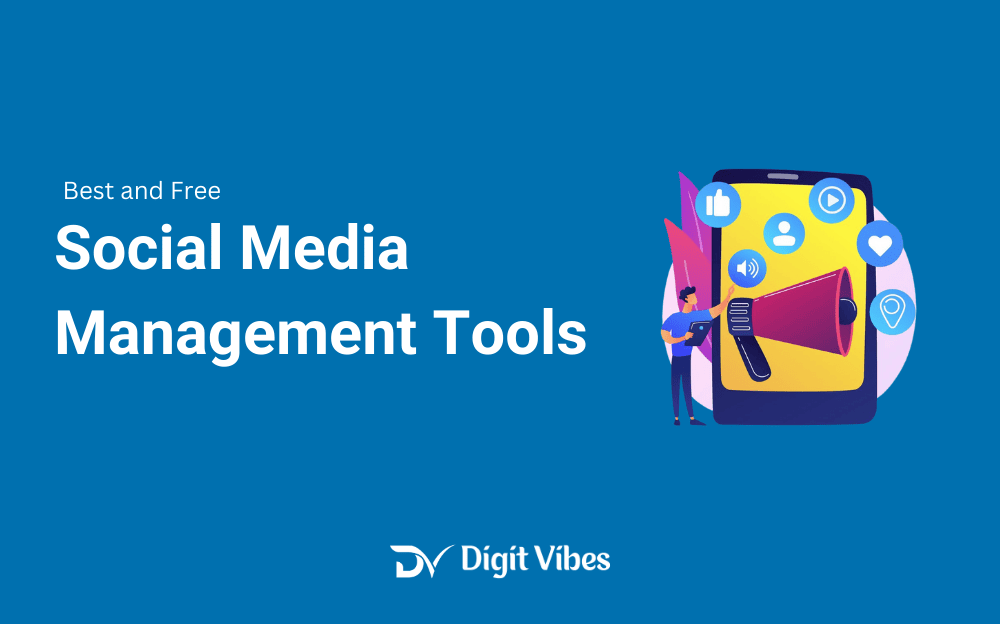
Are you still unsure which video conferencing platform is best for you?
Whether it’s Google Meet, Zoom, or another option, choosing the right tool can make a big difference in your virtual meetings and collaboration. Each platform offers unique features and benefits.
I have personally used all top video Conferencing tools, and in this post, I’ve shared what I found to help you make an informed decision and choose the video conferencing tool that best supports your communication and collaboration needs.

No doubt, Choosing the best video conferencing software for 2024 depends on your specific needs, such as the size of your team, your budget, and the features you require.
Let’s examine each software in detail, one by one.
List of Top Video Conferencing Platforms
In today’s digital world, video conferencing has become a crucial tool for communication, whether for business meetings, online classes, or virtual social gatherings.
To help you find the best fit for your needs, we’ve compiled a list of the top video conferencing platforms for 2024. Here is the List of the best Video Conferencing Platforms, Have a look:
| Platform | Key Features | Best For |
|---|---|---|
| Zoom | Integration with Microsoft 365, Chat and collaboration tools, Meeting scheduling, and Security features. | Large meetings, webinars, and events |
| Google Meet | Businesses using Microsoft 365 need comprehensive collaboration tools. | Users of Google Workspace seeking simplicity and integration |
| Microsoft Teams | Businesses using Microsoft 365 need comprehensive collaboration tools | Businesses using Microsoft 365 needing comprehensive collaboration tools |
| Cisco Webex | HD video, End-to-end encryption, Screen sharing, Meeting analytics, and Integration with third-party apps. | Large enterprises needing robust security and scalability |
| Hopin | Virtual event features, Networking areas, Breakout sessions, and Customizable virtual environments. | Hosting large-scale virtual events and conferences |
| GoToMeeting | Screen sharing, Recording and transcription, Mobile apps,, and Integration with third-party apps. | Businesses needing a reliable and straightforward video conferencing solution |
| Slack | Screen sharing, Recording and transcription, Mobile apps, and Integration with third-party apps. | Teams already using Slack who need integrated video calling |
1. Zoom
Zoom is renowned for its feature-rich platform that supports large meetings and webinars. It offers high-definition video and audio, virtual backgrounds, and breakout rooms.
Its extensive integrations with various apps also add significant value, though it can be pricey if you’re looking for advanced features.
Zoom supports a wide range of meeting sizes, from one-on-one calls to large webinars with thousands of participants.
Pros:
- Versatile features for various meeting types
- Supports large-scale webinars and events
- High-quality video and audio
Cons:
- Can be costly for advanced features
- Security concerns have been noted in the past
Pricing Plans:
- Basic Plan: Free with a 40-minute limit on group meetings
- Pro Plan: Starts at $14.99/month, includes 100 participants and no time limit
- Business Plan: Starts at $19.99/month, includes more participants and admin features
- Enterprise Plan: Custom pricing, includes advanced features and dedicated support
2. Google Meet
Google Meet integrates seamlessly with Google Workspace (formerly G Suite), making it a great choice for users already within the Google ecosystem.

Its seamless integration with Google Workspace makes scheduling and joining meetings straightforward. The platform is user-friendly and provides essential features without being overwhelming.
Pros:
- Seamless integration with Google Workspace
- User-friendly interface
- Real-time captions enhance accessibility
Cons:
- Limited features compared to some competitors
- Advanced features require a Google Workspace subscription
Pricing Plans:
- Free Plan: Basic features with up to 100 participants
- Business Standard: Starts at $6/user/month, includes additional features
- Business Plus: Starts at $12/user/month, includes enhanced features
3. Microsoft Teams
Microsoft Teams is ideal for businesses using Microsoft 365. It combines video conferencing with comprehensive collaboration tools, including chat and file sharing. It’s well-suited for organizations needing a unified communication platform.
It integrates well with Microsoft 365, providing a cohesive experience that combines video conferencing with other essential business tools.
Pros:
- Extensive collaboration tools
- Integrates well with Microsoft 365
- Strong security and compliance features
Cons:
- Can be complex for new users
- Best suited for organizations using Microsoft products
Pricing Plans:
- Free Plan: Includes basic features
- Microsoft 365 Business Basic: Starts at $5/user/month, includes additional features
- Microsoft 365 Business Standard: Starts at $12.50/user/month, includes even more advanced features
4. Cisco Webex
Cisco Webex is a strong choice for enterprises needing robust security and scalability. It offers high-definition video, end-to-end encryption, and detailed analytics. Webex is suitable for large organizations requiring extensive meeting and collaboration capabilities.
With its focus on high-quality audio and video, Cisco Webex delivers a premium conferencing experience. Webex also ensures that large and small meetings alike are conducted smoothly and securely.
Pros:
- Strong security features
- Scalable for large enterprises
- Detailed meeting analytics
Cons:
- Can be more expensive
- Interface may be less intuitive for new users
Pricing Plans:
- Free Plan: Basic features with a 50-minute meeting limit
- Starter Plan: Starts at $13.50/user/month, includes additional features
- Business Plan: Starts at $26.95/user/month, includes advanced features
5. Hopin
Hopin is designed for hosting large virtual events and conferences. It provides customizable virtual environments, networking areas, and breakout sessions, making it ideal for complex, interactive events.
Its customizable event spaces and breakout sessions make it a powerful tool for organizing complex virtual experiences.
Pros:
- Comprehensive virtual event features
- Customizable environments
- Strong networking capabilities
Cons:
- Higher cost compared to standard video conferencing tools
- Complexity might be overkill for simple meetings
Pricing Plans:
- Basic Plan: Starts at $99/month, includes essential features
- Advanced Plans: Custom pricing, includes more advanced features
6. GoToMeeting
GoToMeeting offers reliable video conferencing with features like screen sharing and transcription. It’s user-friendly and integrates with various third-party applications.
GoToMeeting is a user-friendly interface and reliable performance making it a solid choice for professionals needing dependable virtual communication.
It’s well-suited for users who require a straightforward and effective platform for virtual meetings and collaboration.
Pros:
- Reliable and straightforward
- Includes transcription and recording
- Good customer support
Cons:
- Limited advanced features
- Higher cost compared to some competitors
Pricing Plans:
- Starter Plan: Starts at $12/month, includes essential features
- Professional Plan: Starts at $16/month, includes additional features
- Business Plan: Starts at $19/month, includes advanced features
7. Slack
Slack offers integrated video calling within its chat platform. It’s a great choice for teams already using Slack for communication and file sharing.
It enhances team productivity by offering channels for organized conversations, direct messaging, and file sharing. With features like organized channels, direct messaging, and extensive app integrations, Slack helps teams stay organized and productive.
Pros:
- Integrated with Slack’s chat and file-sharing
- Simple and easy to use
- Good for teams already using Slack
Cons:
- Limited to Slack’s interface
- Basic video features compared to dedicated platforms
Pricing Plans:
- Free Plan: Includes basic video calling features
- Standard Plan: Starts at $8/user/month, includes additional features
- Plus Plan: Starts at $15/user/month, includes more advanced features

Each platform offers unique features and benefits designed to enhance your virtual interactions, from seamless integration with other tools to robust security measures.
Our Opinion
Pick the Suitable Video Conferencing Software
Picking the right video conferencing tool is important for smooth and effective online meetings. Each tool has its strengths, so it’s important to choose one that fits your needs. Here’s a simple look at the top video conferencing platforms for 2024.
From my experience, Zoom and Microsoft Teams are excellent for their features and ease of use. Zoom is known for its clear video and features like breakout rooms and webinars. Microsoft Teams works well if you’re already using Microsoft 365, as it integrates seamlessly with other Microsoft tools.
If you’re looking for something straightforward and budget-friendly, Google Meet is a good option, especially if you use Google Workspace. Cisco Webex is great for businesses needing strong security and advanced features.
For hosting larger events or webinars, Hopin is designed to handle big virtual events with features like virtual networking and expo areas. GoToMeeting is user-friendly and works well for both small and large meetings.
Slack is best known for team messaging but also offers video calling, making it a good choice if you already use Slack for communication.
FAQs: Best Video Conferencing Software 2024
What features should I look for in video conferencing software?
You can look for features like clear video and audio, screen sharing, meeting recording, and the ability to schedule and manage meetings. Features like breakout rooms or webinars might also be important depending on your needs.
Are there any free video conferencing software?
Yes, some platforms offer free plans with basic features. Google Meet and Zoom both have free versions that are good for small meetings or personal use.
Can these tools handle large webinars or events?
Yes, platforms like Zoom, Cisco Webex, and Hopin are equipped to handle large-scale events and webinars. Zoom and Cisco Webex offer advanced features for big meetings, while Hopin is specifically designed for large virtual events.
What if I need support or training?
Most platforms offer support like tutorials and customer service. Paid plans often include extra support options, such as faster response times or dedicated help.
Is there a difference in security features among these tools?
Yes, security can vary. Cisco Webex and Zoom offer strong security features, including encryption and compliance with data protection rules. Check the security features to make sure they meet your needs.
How important are Integrations with other tools?
Integration is important if you use other productivity tools. For example, Microsoft Teams works well with Microsoft 365, while Zoom connects with many other apps and services.
What is the best tool for a team already using Slack?
If you’re already using Slack for team communication, it’s worth noting that Slack offers built-in video calling features. For more advanced video conferencing needs, you can integrate Slack with other platforms like Zoom or Google Meet.
How do I decide which video conferencing tool is right for me?
Assess your specific needs, such as meeting size, required features, and integration with other tools. Try free versions or demos to see which platform best suits your workflow and preferences.
Wrap-Up
Conclusion: The Right Video Conferencing Software for 2024
Selecting the best video conferencing software for 2024 depends on your specific needs and preferences. Each platform offers unique features tailored to different use cases, from simple meetings to large-scale virtual events.
Consider factors such as integration with existing tools, feature set, pricing, and user experience when making your decision.
Whether you need a versatile tool for large webinars, a simple solution for internal meetings, or a platform for engaging virtual events, there’s a video conferencing solution to fit your requirements.
Evaluate the options based on your needs and choose the tool that best supports your communication and collaboration goals. Happy Conferencing!





